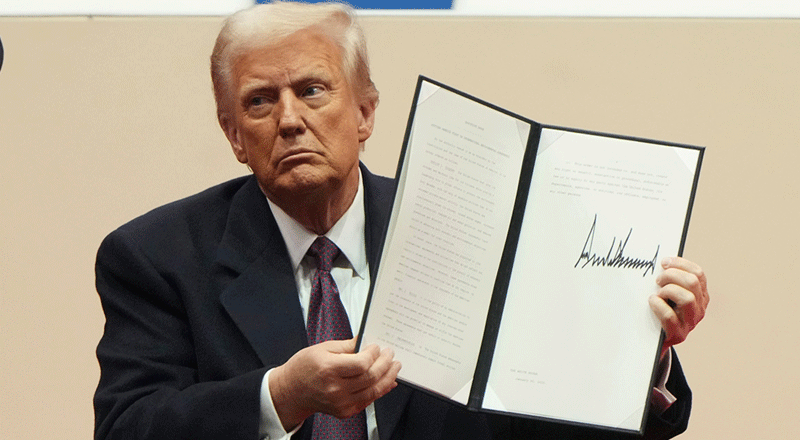India’s recent moves to establish itself as a key player in the global semiconductor industry are being seen as a critical step towards technological sovereignty and economic security. The announcement of a US-India collaboration to build a multi-material fabrication unit dedicated to national security marks a historic moment, not just for military cooperation, but for India’s broader ambition to become a hub for chip manufacturing. This shift could reshape India’s economic trajectory and its role in the global tech supply chain, if managed effectively.
A Partnership of Historic Proportions
The joint US-India effort to build the world’s first multi-material fabrication unit represents a technological leap comparable to the 2008 India-US nuclear agreement. Announced on the sidelines of the Quad Summit—a strategic forum of the US, India, Japan, and Australia—the partnership will see the production of advanced chips for both military and civilian telecommunications networks. This collaboration highlights the importance both nations place on securing supply chains for semiconductors, an industry where geopolitical tensions have heightened global competition.
For India, this partnership signifies an opportunity to integrate into a critical global supply chain that powers everything from smartphones to artificial intelligence. Semiconductors are vital components in military hardware, telecommunications, and almost every major technology platform today. India’s active role in this sector is essential not only for its economy but for its national security.
Avoiding Past Mistakes: Building a Domestic Chip Ecosystem
India’s push into semiconductors reflects lessons learned from its economic history. After bypassing industrial manufacturing and leaping from an agriculture-driven to a service-led economy, India risks missing out on the ongoing silicon revolution. Prime Minister Narendra Modi’s ambition, outlined in his Independence Day speech, for “every device in the world to have an Indian-made chip” encapsulates the government’s vision for technological self-sufficiency.
The government has backed its ambitions with significant financial support. Initiatives such as 50% financial backing for chip production and the launch of a Critical Mineral Mission to secure raw materials are steps in the right direction. Additionally, the establishment of a Semiconductor Research Centre in collaboration with top-tier Indian Institutes of Technology (IITs) and a workforce development plan to train 85,000 technicians and engineers demonstrate a holistic approach.
Moreover, states like Gujarat, Karnataka, and Tamil Nadu have rolled out their semiconductor policies, showing a collective national effort to become a semiconductor powerhouse. This approach underscores the government’s commitment to building a semiconductor ecosystem capable of meeting both domestic and global demand.
Addressing the Challenges Ahead
Despite the optimism surrounding India’s semiconductor ambitions, several challenges remain. Building a semiconductor fabrication plant requires billions of dollars in capital investment and cutting-edge technology, areas where India currently lags. While India does have 20% of the world’s semiconductor design engineers, a KPMG report estimates that the country will need 1.2 million skilled workers in the semiconductor industry by 2032. This skills gap poses a significant hurdle in scaling India’s chip manufacturing capabilities.
Former Reserve Bank of India Governor Raghuram Rajan has voiced concerns about the government’s subsidies, noting that they are upfront capital subsidies rather than production-linked incentives. To compete in the global market, India must ensure that its support structures enable long-term innovation and production, not just initial investment. Moreover, India currently has the capacity to produce 28-nanometer chips, while cutting-edge smartphones today require chips as small as 3 nanometers. To truly compete, India must look to fund multiple generations of chip factories, advancing technology as global demand shifts.
Geopolitical Pressures: Learning from China’s Strategy
India’s semiconductor push cannot be viewed in isolation from global geopolitical pressures, particularly those involving China. As Chris Miller writes in Chip War: The Fight for the World’s Most Critical Technology, China’s shift from dependence on energy to reliance on semiconductors is evident in its growing investment in chip manufacturing. The US ban on Huawei’s access to advanced chips manufactured using American technology has alarmed China, pushing it to invest heavily in developing its own semiconductor industry.
For India, while the scale of China’s investment in chip technology may not need to be matched, it serves as a crucial lesson. Currently, 75% of the world’s semiconductor production is concentrated in East Asia, primarily Taiwan, South Korea, and China. Given the geopolitical risks of such a concentration, including potential supply chain disruptions, India’s push to localize production is strategically sound. The government’s focus on building interconnected labor forces and fostering innovation through initiatives like the Anusandhan National Research Foundation, which has a Rs 1 trillion fund for research, are steps aimed at mitigating these risks.
Economic and Productivity Gains
The benefits of investing in semiconductor manufacturing extend beyond national security and technological sovereignty. A recent IMF report suggests that investing in advanced semiconductor technologies could boost global productivity, with India standing to gain significantly. By building a robust semiconductor ecosystem, India could drive digital transformation across key sectors like green energy, healthcare, education, and governance.
Additionally, by localizing production, India could foster a “learning by doing” approach, which would gradually reduce production costs and increase expertise. As India builds its capacity, it will likely see long-term productivity gains that extend beyond the semiconductor industry, impacting the broader economy.
The Road Ahead: A Call for Greater Investment
While India’s semiconductor efforts are ambitious, they are still in their infancy. The current spending of 0.7% of GDP on research and development (R&D) is insufficient to build a thriving, research-intensive semiconductor industry. Experts have long called for increasing India’s R&D spending to 3% of GDP to drive innovation and competitiveness. Public-private partnerships, collaboration between academia and industry, and greater investment in research will be crucial to achieving the government’s goals.
In conclusion, India’s semiconductor push is a step in the right direction, positioning the country to be a critical player in the global supply chain for semiconductors. With strong government backing, international partnerships, and a focus on workforce development, India has the potential to secure its place in the silicon revolution. While significant challenges remain, particularly in terms of infrastructure, technology, and workforce skills, the foundation has been laid for a promising future in the world of semiconductors.
(With inputs from agencies)





